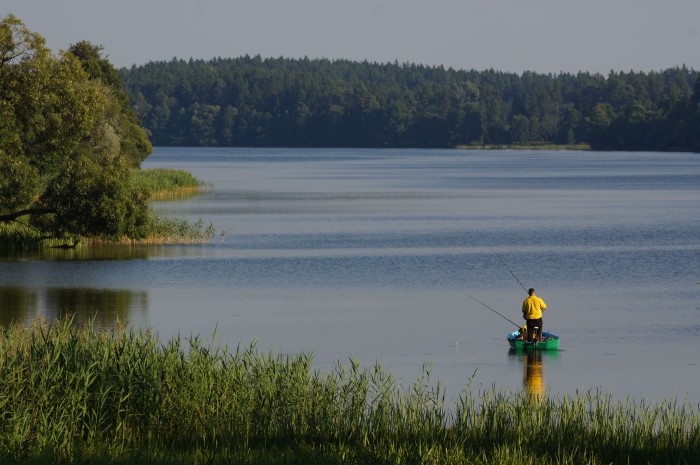
The Suwałki land features the most continental climate of all Poland. Summers can be here hot, and winters frosty. This relatively harsh climate influences the growing here plants. Many of them are northern (boreal) species. The most characteristic, a sign of the northerly character of the local environment, is the omnipresent spruce. The region’s woods and numerous bogs are rich in many valuable vascular plants, among which are found also the most endangered species included in the Red Data Book of Plants: Dwarf Birch (Betula humilis), Alpine Clubrush (Baeothryon alpinum), Marsh Saxifrage (Saxifraga hirculus),Dwarf Marsh Violet (Viola epipsila), Greek Valerian (Polemonium coeruleum) Lady’s Slipper Orchid (Cypripedium calceolus), Hoodshaped Orchid (Neottianthe cucullata), False Twayblade (Liparis loeselii), White Adder’s Mouth Orchid (Microstylis monophyllos), Bog Adder’s Mouth Orchid (Hammarbya paludosa), Ruthe’s Orchid (Dactylorhiza ruthei) and Early Marsh Orchid (Dactylorhiza incarnata).
Similarly rich is the animal world. Their numerous species are connected with the specific lacustrine and wetland habitats.
Over thirty species of fish were found living in the waters of the Suwałki region. The rarest red-listed are: Lake Trout (Salmo trutta lacustris), European Bitterling (Rhodeus sericeus) and Loach (Misgurnus fossilis). The deep, cool, and well-oxygenated waters of the lakes are the habitat of Lavaret (Coregonus lavaretus) and Vendace (Coregonus albula) and Smelt (Osmerus eperlanus), whereas the clean rivers of Brown Trout (Salmo trutta m. fario). The local wetlands are a habitat for 12 species of amphibians, including such rare species as: Crested Newt (Triturus cristatus), Natterjack Toad (Bufo calamita), Green Toad (B. viridis), Spadefoot Toad (Pelobates fuscus), Tree Frog (Hyla arborea) and Fire-bellied Toad (Bombina bombina).

Among the common here wetland birds are: Great Cormorant (Phalacrocorax carbo), Mute Swan (Cygnus olor), Black-headed Gull Larus ridibundus), Great Crested Grebe (Podiceps cristatus), Coot (Fulica atra), the Merganser (Mergus merganser) and ducks: Mallard Anas platyrhynchos), Common Goldeneye (Bucephala clangula), Tufted Duck (Aythia fuligula) and the Common Pochard (A. ferina). In addition to the common here Grey Heron (Ardea cinerea), increasingly noted is the presence of a visitor from the south of Europe – the Great White Egret (Egretta alba). Majestically hovering over the Suwałki lakes can be spotted the White-tailed Eagle (Haliaeetus albicilla) and, with a little luck, also the much rarer Osprey (Pandion haliaetus). The most common bird of prey associated with the regional wetlands is the Marsh Harrier (Circus aeruginosus).
With over 50 species of mammals, the region is an important Polish sanctuary to the growing populations of Gray Wolf (Canis lupus) and the very rare Mountain Hare Lepus timidus. Numerous are two large mammal species associated with water – the Beaver Castor fiber and the Otter Lutra lutra. Quite popular is here Elk Alces Alces and the numerous Red Deer Cervus elaphus, Roe Deer Capreolus capreolus and Wild Boar Sus scrofa. The most common predator is Red Fox Vulpes vulpes. Much rarer is Badger Meles meles, and occuring here also Stone Marten Matres foina, Pine Marten M. martes, Polecat Mustela putorius, Ermine M. erminea, Least Weasel M. nivalis and Squirrel Sciurus vulgaris.


